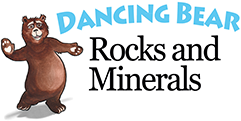How Fossil Dig Kits Spark STEM Curiosity in Kids?
Children are naturally curious. From the moment they can walk, they pick up rocks, dig in the dirt, and ask endless questions about the world around them. That curiosity is the foundation of learning, and one of the best ways to nurture it is through hands-on exploration. Fossil dig kits take that innate sense of wonder and channel it into discovery. With a chisel in one hand and a brush in the other, kids become little scientists, unearthing pieces of the past while building skills that connect directly to STEM learning.
Here’s how these fossil dig kits transform curiosity into meaningful science experiences.
1. Hands-On Science in Miniature
Instead of passively watching or reading, fossil kits invite kids to do. Each kit comes with tools similar to those used by real paleontologists, like brushes, chisels, and magnifiers. The tactile experience of scraping away material and uncovering a hidden fossil gives kids a sense of accomplishment and ownership. This hands-on process makes scientific learning real, not abstract.
2. A Gateway to Earth’s History
When a child uncovers a shark tooth or ammonite fossil, the questions begin: What is it? How old is it? Suddenly, they’re not just holding a rock, they’re holding a story millions of years old. Fossil kits serve as an entry point into geology, paleontology, and Earth science, helping kids connect with concepts like evolution and ancient ecosystems in a way textbooks rarely achieve.
3. Building Patience and Precision

Digging into a fossil block takes time and care. Kids learn to slow down, chip away carefully, and brush away dust to reveal their find. This patience strengthens fine motor skills and builds persistence, a valuable lesson in both science and life.
4. Encouraging Critical Thinking
Digging isn’t guesswork; it’s strategic. Children must decide where to chip, how much pressure to apply, and when to change tactics. This mirrors the scientific process: forming a hypothesis, testing it, and adjusting based on results. Fossil kits cultivate the same problem-solving mindset used in labs and research fields.
5. Fueling Imagination and Storytelling
Each discovery sparks imagination. A single fossil tooth can inspire questions about ancient oceans, predator-prey relationships, or even dinosaur diets. Kids often build stories around their finds, blending creativity with science, a combination that fuels deeper engagement and lasting curiosity.
6. Variety That Keeps Curiosity Alive
Some kits contain a single fossil; others include multiple specimens like brachiopods, ammonites, or dino bones. The variety keeps kids coming back for more, expanding their exposure to different branches of science. For younger kids, even the excitement of “digging treasure” is enough to capture their imagination while still laying a foundation for STEM learning.
7. A STEM Gateway for All Ages
Fossil dig kits adapt easily to different age levels. Younger children get sensory play and excitement from the dig itself, while older kids engage in classification, research, and even creating fossil displays. This makes them an inclusive STEM tool that grows with a child’s development.
The Bigger Picture: Unearthing Future Scientists
Individually, these benefits might seem small. But together, they add up to something powerful: curiosity transformed into scientific thinking. Fossil kits encourage observation, patience, problem-solving, and creativity, all core elements of STEM education. They remind kids that science isn’t just something you read about; it’s something you do.
How Fossil Kits Support Learning in Classrooms and Homeschooling

1. Bringing Lessons to Life in Classrooms
Fossil kits can turn ordinary lessons into interactive experiences. Teachers can integrate them into geology, paleontology, or general science units, giving students the chance to excavate their own specimens. Group digs promote teamwork, while the hands-on process reinforces concepts like fossilization, ecosystems, and Earth’s history in a way traditional lectures cannot.
2. Ready-Made STEM Projects for Homeschooling
For homeschooling parents, fossil kits are low-prep tools with high learning value. A single dig activity can branch into multiple subjects:
-
Science: Identifying and classifying fossils
-
Math: Measuring and recording finds
-
History: Exploring prehistoric life and environments
This flexibility makes them an engaging way to meet learning goals while keeping kids excited about science at home.
3. Alignment With Science Standards
Hands-on digging activity aligns closely with inquiry-based learning approaches. The Next Generation Science Standards (NGSS), for example, emphasize observation, data interpretation, and understanding Earth’s history. Fossil kits naturally support these objectives by giving students real-world evidence to analyze. Whether in a classroom or homeschool setting, they help bridge the gap between abstract concepts and practical application.
Conclusion
At the heart of every fossil dig is curiosity, the same curiosity that drives scientific discovery. By giving kids tools to excavate and uncover pieces of history, fossil kits transform play into education, inspiring the next generation of thinkers, explorers, and scientists.
Explore Fossils, Dig Kits, and More at Dancing Bear
Looking for a way to spark your child’s curiosity? Explore Dancing Bear Rocks and Minerals’ Dig & Activity Kits, where discovery comes to life. From fossil excavation kits to gemstone digs, geodes, and collector sets, Dancing Bear offers hands-on adventures that blend fun with STEM learning. Browse the collections today and give kids a chance to dig deeper, literally, into the wonders of science.
FAQs on Fossil Dig Kits and STEM Learning
Designed for ages 6+, younger kids enjoy sensory play while older kids can research and display their finds.
They combine science, math, and problem-solving, teaching Earth’s history, measurement, and observation skills aligned with NGSS.
Yes. They bring lessons to life in classrooms and serve as ready-made STEM projects for homeschoolers.
Yes. Kits include child-friendly tools, and adult supervision ensures safe and educational use.



